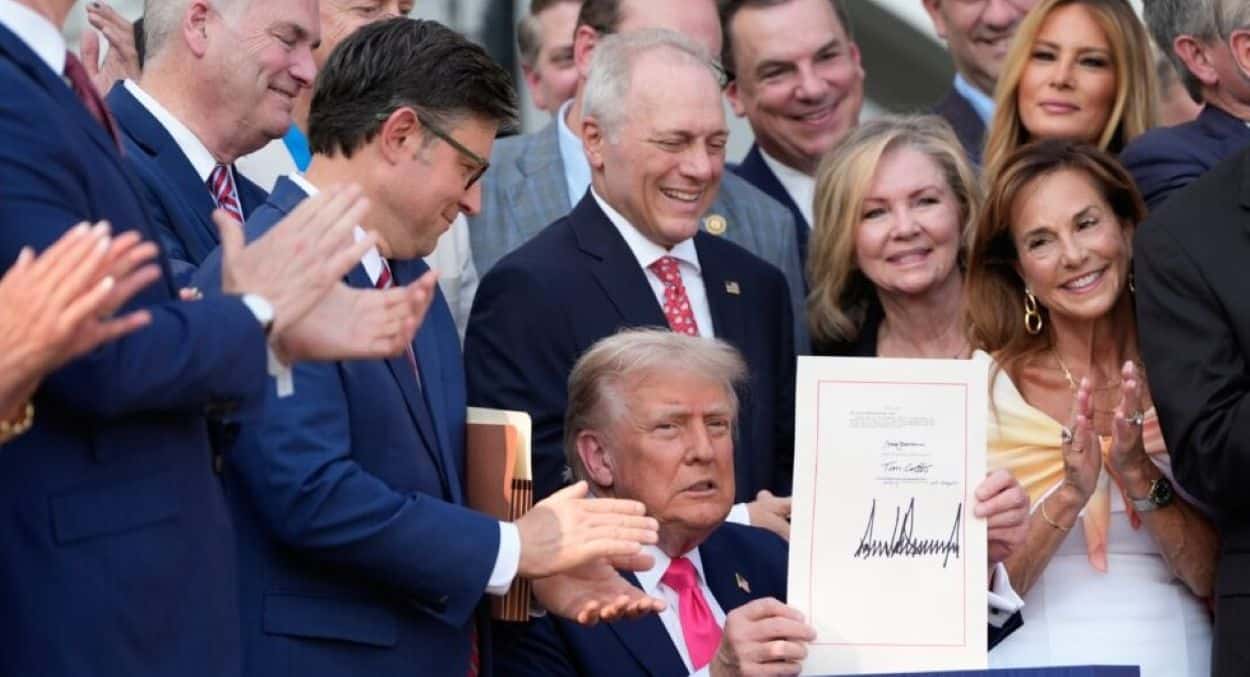On July 4, 2025, U.S. President Donald Trump signed a sweeping tax and spending cuts bill into law during a celebratory White House ceremony, marking a key second-term victory. The bill, narrowly passed by the House, has ignited fierce debate over its economic impact.
The bill, passed with a 218-214 House vote on July 3, 2025, makes Trump’s 2017 tax cuts permanent, allocates $10 billion for immigration enforcement, and cuts healthcare and food aid, potentially affecting 5 million Americans, per CBO estimates. It adds $3 trillion to the $36.2 trillion national debt, per a nonpartisan analysis. Trump, at the South Lawn signing with stealth bomber flyovers, called it “the biggest tax cut and border security investment in history,” per AP News.
House Democratic Leader Hakeem Jeffries delivered an 8-hour-46-minute speech, decrying the bill as a “giveaway to billionaires,” per The Hill. DNC Chair Ken Martin warned, “This will cost Republicans the 2026 midterms,” predicting voter backlash. Only two of the 220 House Republicans opposed the bill, despite concerns about debt.
President Donald Trump signed his $3.4 trillion budget bill into law Friday, enshrining an extension of tax cuts, temporary new breaks for tipped workers and funding to crack down on illegal immigration: https://t.co/hNpGNH9gZF pic.twitter.com/XJwyesV6Dh
— Bloomberg (@business) July 5, 2025The signing event, which drew 500 supporters, resembled a campaign rally, with Trump expressing praise for House Speaker Mike Johnson and Senate Majority Leader John Thune. The bill supports Trump’s priorities for 2025, including threats of tariffs against 10 to 12 countries and initiatives in Middle East diplomacy. However, critics point out the potential fiscal risks, noting that the 2024 deficit is projected to be $1.9 trillion. They also warn that the measure could lead to reduced access to healthcare for 15% of low-income households.
Read: So Tempting to Escalate : Elon Musk Responds to Trump’s Deportation Threat
The tax and spending cuts bill impacts 330 million Americans, reshaping economic and social policy. With 40% of low-income families at risk of losing benefits, per Urban Institute, it fuels debates on equity and fiscal responsibility, trending. As Trump’s second term unfolds, the legislation will influence global markets and U.S. politics, setting the stage for contentious elections in 2026 and beyond.






